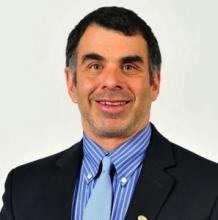LAC DHS Launches Homeless Program

The Los Angeles County Department of Health Services (DHS) has embarked on an ambitious public-private program to house thousands of homeless in an effort to cut healthcare costs.
The county's Board of Supervisors has earmarked $14 million over the next four years to finance the program, which is known as the Flexible Housing Subsidy Pool. An additional $4 million is being provided via a two-year grant from the Conrad N. Hilton Foundation.
Altogether, officials believe that the money will be enough to house about 2,400 homeless who are within county boundaries, as well as provide them support services.
County officials plan to introduce the program next week during an event in South Los Angeles, at the site where 13 formerly homeless patients are being housed.
The provision of housing, mental health outreach, groceries and other ancillary services to the homeless is used to curb what are known as “frequent fliers” – regular visitors to hospital emergency rooms who can sometimes run up healthcare costs of hundreds of thousands of dollars a year. Other organizations, such as the Hospital Association of Southern California, have introduced recuperative care programs to temporarily house homeless patients upon discharge from hospitals to reduce their chance of readmission. Many are often placed in permanent housing by social workers connected to the program.
By comparison to the often steep costs of treating repeat ER patients, the housing and support subsidies provided by the DHS will average $1,000 to $1,100 a month, or around $12,000 to $13,000 a year, according to Marc Trotz, director of DHS' housing program.
About 290 formerly homeless county residents now have housing as a result of the project, and Trotz projects that nearly 900 will be housed by the end of the year. Most of the housing subsidy residents are living in apartments in South Los Angeles, the San Fernando, San Gabriel and Antelope Valleys, according to Trotz.
A non-profit agency called Brilliant Corners will coordinate housing for the homeless, who will be selected through the patient intake process at the four hospitals and 19 clinics DHS operates countywide.
"We see this pool as an essential tool in our effort to end homelessness for L.A.'s chronically homeless residents living with complex medical and behavioral health conditions who are often the highest utilizers of expensive emergency healthcare services,” said DHS Director Mitchell Katz, M.D.
Katz implemented a more modest program when he ran the San Francisco Department of Public Health, placing about 1,000 of the city's homeless into housing and support programs. Denver and several other cities have also developed such programs to help cut healthcare costs for the homeless population.
A study of 103 homeless with health issues who were housed under a DHS pilot project in 2010 and 2011 saw ER visits and inpatient admissions cut by 77%, and an 85% reduction in inpatient days. Costs for the DHS were reduced an average of $32,000 a year.
"We applaud the leadership of Dr. Katz and his team in demonstrating that funding supportive housing leads to better health outcomes and is more cost effective in the long run,” said Steven M. Hilton, chief executive officer of the Hilton Foundation.
Trotz noted however that while the program is ambitious in scope, it will not solve the entire homeless problem and healthcare. There are many as 58,000 homeless in Los Angeles County, which is the most populous county in the United States. Of those, Trotz estimates between 5,000 and 7,000 need permanent housing in order to control their healthcare costs.
"It’s a good start to addressing the problem, but because of its size it is not the entire solution,” Trotz said.






